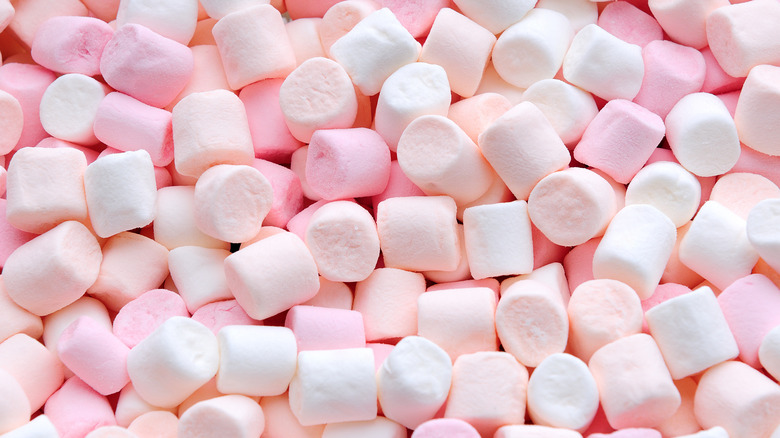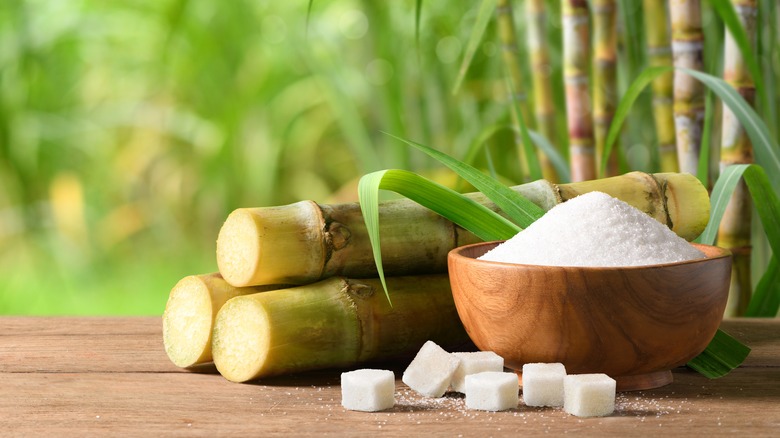Carla Hall's Trick To Keeping Brown Sugar From Hardening
Celebrity chef Carla Hall has a sweet and ingenious way to stop brown sugar from hardening like rock: giant marshmallows. Who'd have thunk it? That is, that you can use one sweet treat to save another. But it's true, you can. Chalk this marshmallow hack up to the fact that the average jumbo marshmallow has enough moisture in it to slow down the evaporation process in the brown sugar, provided, of course, that you toss them into the same container together.
That brown sugar is even moist at all is thanks to its molasses content, and as it turns out, it really doesn't take much molasses to make brown sugar. The recipe for light brown sugar calls for only about 1 tablespoon of molasses for every cup of sugar. And if you want to substitute dark brown sugar for the light brown sweetener, just double the molasses. Clearly, it's not the main ingredient, and yet, you certainly notice when the molasses in the brown sugar begins to give up the ghost. The inevitable result of this is dry, clumpy brown sugar.
Using marshmallows to preserve brown sugar
The trick to keeping your brown sugar moist, then, is to put something that has moisture in it. In this case, chef Carla Hall's recommended marshmallows. Marshmallows are made when gelatin is mixed with sugar and starch, as well as corn syrup and water. It's the latter two ingredients that give marshmallows their moisture content. As the moisture in the molasses evaporates, the moisture from the marshmallow replaces what the molasses has lost.
When you get a new bag of brown sugar, it'll keep longer if you put it to an airtight container immediately. Small containers, such as one of OXO's POP storage containers, work better for this trick. Once you transfer the brown sugar to the container, you'll need to drop in one to two jumbo marshmallows to keep your brown sugar clump-free for a few months. To ensure that it stays free of sugary pebbles forever, be sure to check your container of brown sugar regularly and change out the marshmallows as they begin to harden, maybe every couple of weeks to be on the safe side.
The chemistry behind why brown sugar hardens
There are two types of sugars on the market — sugars that come from sugarcane, a type of grass, and sugars that come from beets. Molasses is a byproduct of the processing of sugarcane. When making sugar, like C&H's dark brown cane sugar, manufacturers crush the cane to extract juice from the sweet grass. The juice is boiled down until sugar crystals start to form.
Molasses is the leftover syrup that forms once the crystals are removed. And because it comes from the juice of sugar cane, it has a fair amount of moisture, even after it turns from juice to syrup. Accordingly, when molasses is added to sugar's granulated goodness, it infuses brown sugar with moisture — at least temporarily. Herein lies one of the differences between white and brown sugar.
Just as the air turns your bread stale, so too does it turn your brown sugar into dry chunks. Once the moisture in the molasses starts to evaporate away, it might seem that there's nothing to stop the sugar crystals in brown sugar from sticking together and forming sweet rocks. Of course, that's what the marshmallows are for.


